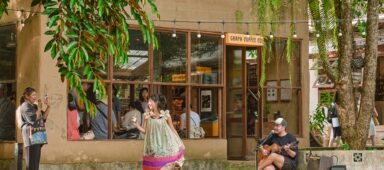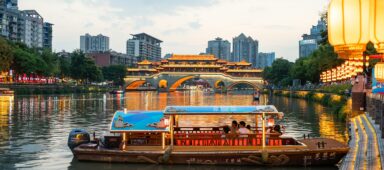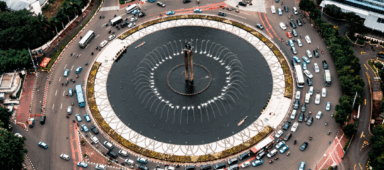Every festival or celebration has elements and practices that are unique to it. Here we take a look at common sights during Diwali, also known as the Festival of Lights.

Symbolising the triumph of light over darkness, Diwali is traditionally marked by lighting oil lamps at home, in temple and even places of business. Generally lit and decorated at the entrance of a home or building (it can also be found in front of the prayer altar within the home), the practice is commonly observed at night, to signify the victory of light over darkness. Besides oil lamps, all forms of lights are encouraged, from decorative fairy lights, which can be seen adorning homes come Diwali, to just having all the lights on at home.

Kolam is a beautiful, often colourful and intricate pattern that can be found on the floor of the entrance of a home or building, as a complement to the oil lamps. Commonly made from coloured rice or dry flour, kolams are generally considered a decoration, though some believe it to bring good luck. Traditionally done by women or girls, a kolam is not too complicated to design on one’s own using simple geometric or flower petal shapes. More complex designs involve depicting deities or the peacock, which is a favourite during Diwali. Once a kolam is completed, oil lamps are decorated within the design or surrounding it. If all of this sound like too much work, these days, there are ready-made kolam stickers, which can simply be attached to the floor.
Though these treats are available all year round these days, murruku, ghee balls, chippi, omopoddi, ladhu are staples during Diwali. Adding to the traditional goodies are a variety of biscuits and cookies, the all-time favourites being pineapple tarts and butter or semolina cookies. Making these delicacies are as much fun as eating them, with families coming together to make them at least a week or more before the big day. On Diwali day itself, you will find them often displayed front and centre in the living room where guests are received. With so much socialising to do and Diwali programmes to watch on TV, it is not uncommon to be snacking on these treats throughout the day!
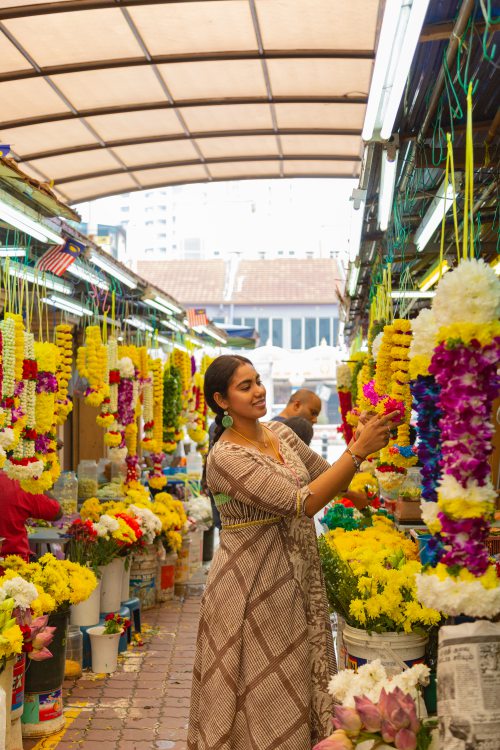
Colourful bazaars
At least a month preceding Diwali, popular Indian streets like the Little India neighbourhood in Brickfields multiply in the number of shops, as traders set up makeshift stalls offering all kinds of items in preparation for Diwali. Besides selling treats, clothes and footwear, to imitation jewellery and decorative items, there are even booths where you can get beautiful henna tattoos for your hands and feet. The atmosphere becomes more energised at night, with blaring music and colourful lights as traders call out to shoppers to their stalls and shops. With everything they need in one area, it is easy for families to spend an entire day doing their Diwali shopping. Closer to Diwali, crowds soar in these streets as prices are slashed and bargaining becomes easier.
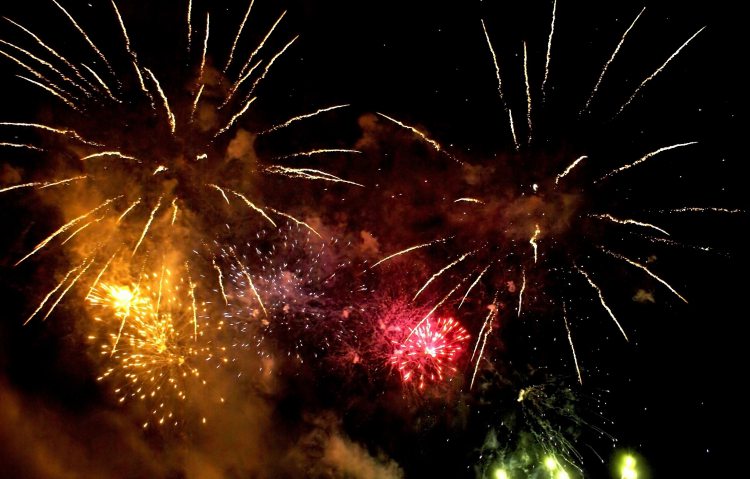
Fireworks
Come Diwali night, the young and old gather in front of their homes after dinner to have some fun playing fireworks for a few hours. Whether its sparklers, fountains, spinning wheels or skyrockets, it is difficult to resist the sight of coloured flames, sparks and beautiful displays in the night sky, even with the noise. It is perhaps one of the moments most looked forward to by everyone during Diwali!


